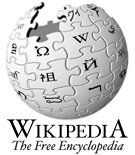The Rosetta Stone is a fragment of an Ancient Egyptian granodiorite stele whose engraved text provided the key to the modern understanding of Egyptian hieroglyphs. The inscription records a decree that was issued at Memphis in 196 BC on behalf of King Ptolemy V. The decree appears in three texts: the upper one is in ancient Egyptian hieroglyphs, the middle one in Egyptian demotic script, and the lower text in ancient Greek.
Originally displayed within a temple, the stele was probably moved during the early Christian or medieval period, and eventually used as building material in the construction of a fort at the town of Rashid (Rosetta) in the Nile delta. It was rediscovered there in 1799 by a soldier of the French expedition to Egypt. As the first known bilingual text, the Rosetta Stone aroused widespread public interest with its potential to decipher the hitherto untranslated ancient Egyptian language. Lithographic copies and plaster casts began circulating amongst European museums and scholars. Meanwhile, British troops defeated the French in Egypt in 1801, and the original stone came into British possession under the Capitulation of Alexandria. Transported to London, it has been on public display at the British Museum since 1802. It is the most-visited object in the British Museum.
Study of the decree was already under way as the first full translation of the Greek text appeared in 1803. It was 20 years, however, before the decipherment of the Egyptian texts was announced by Jean-François Champollion in Paris in 1822; it took longer still before scholars were able to read other ancient Egyptian inscriptions and literature confidently. Major advances in the decoding were: recognition that the Stone offered three versions of the same text (1799); that the demotic text used phonetic characters to spell foreign names (1802); that the hieroglyphic text did so as well, and had pervasive similarities to the demotic (Thomas Young, 1814); and that, in addition to being used for foreign names, phonetic characters were also used to spell native Egyptian words (Champollion, 1822–1824). Ever since its rediscovery, the Stone has been the focus of nationalist rivalries, including its transfer from French to British possession during the Napoleonic wars, the long-running dispute over the relative value of Young's and Champollion's contributions to the decipherment, and since 2003, the demand for the Stone's return to Egypt.
Two other fragmentary copies of the same decree were discovered later, and several similar Egyptian bilingual or trilingual inscriptions are now known, including two slightly earlier Ptolemaic decrees (the Decree of Canopus in 238 BC, and the Memphis decree of Ptolemy IV, ca. 218 BC). The Rosetta Stone is therefore no longer unique, but it was the essential key to modern understanding of ancient Egyptian literature and civilization. The term Rosetta Stone is now used in other contexts as the name for the essential clue to a new field of knowledge.
Source: http://en.wikipedia.org/wiki/Rosetta_Stone
สมัครสมาชิก:
ส่งความคิดเห็น (Atom)














ไม่มีความคิดเห็น:
แสดงความคิดเห็น